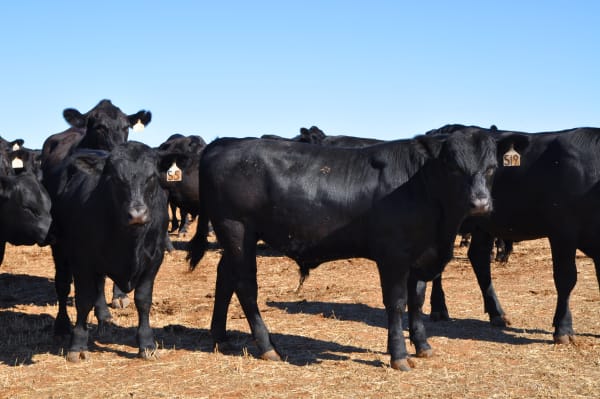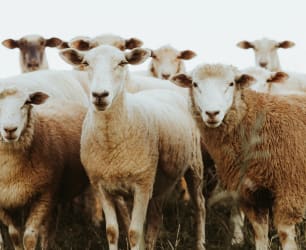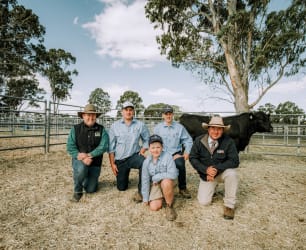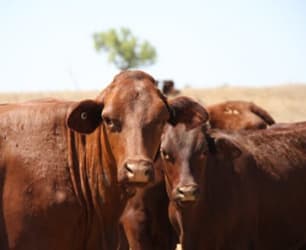ROSELEIGH Angus is one of South Australia’s oldest Angus studs.
The third-generation farm located near Pinnaroo has weathered the ups and downs of the industry since it was founded by Charles Cowley in 1954.
These days the property is run by Charles’s son Ron, and his son Mat Cowley.
They run about 130 cows and sell between 45 and 50 bulls a year – with sale time in February.
Last year they sold a bull for $20,000, and averaged $13,450 – their best result ever.
“Roseleigh bulls are bred a bit tougher, and can put up with the dry, the heat, the harsher conditions,” Mat said.
“We try to keep the fertility running in them as well, and the same with the cows.
“The fertility is a big side of things when it is not a high-rainfall area.
“We look for length and thickness – probably a bit more of the old school sort of animal.
“It has to be a good-looking animal, with good structure, temperament and ‘doing’ ability – with a frame score of six or six and a half.”
Ron said the Cowleys also look for length because they aim to produce an animal that will produce weight, given sellers are paid in cents per kilogram.
Running cattle in the Mallee has its challenges, with seasonal conditions key to a good year.
“The cows do well in the Mallee, but it is just what sort of tucker we have available for them, to make sure we get their nutrition right to keep them running as best we can,” Mat said.
“The sale last year was extremely good, the best we have ever had, and cattle prices at the moment are phenomenal.
“Last year’s sale was a hell of a lot more than our expectations… it blew us out of the water last year with how the sale did.
“The average the year before was $6500 and last year was $13,450.”
The Cowleys have embraced artificial insemination and use it to inseminate about 70 per cent of their herd, while they also utilise embryo work.
“Because there is so much happening in the cattle world now, in breeding and through AI (artificial insemination) and embryos… when we use a new sire we always look forward to seeing what the calves are going to do,” Ron said.
“We look forward to that first calf on the ground – what is he or she going to look like?
“It is one of those things where you get a buzz out of what you are doing.
“You see a bull and then you use him and then you wait for nine months before you get a calf on the ground, and then you wait another 12 months before you can see how well he is going to do.”
This aspect of the business is one that Mat also enjoys.
“From the day we think about what bull we are going to use, it is close to two and a half years before we sell it, so it is not an overnight thing,” he said.
“You try to make the right decision, so when you do have a good bull that you put up for sale, you have to be pretty happy looking at it.”
Mat was always going to be a farmer, even as a young fellow, enjoying both the cattle side of the business along with the cropping enterprise the Cowleys also oversee.
“I take a fair bit of pride in what we breed,” Mat said.
“I am third generation, so a fair bit has been handed down. I love the farming, I love my cows and doing the cropping and I am lucky to have my family doing it with me.
“We sow a couple of hundred hectares of feed every year, and grow our own hay, lentils, vetch, lupins, wheat, barley, oats – the cropping side of it is a fruit salad.
“We only have one annual pasture paddock, every other acre gets sown for cows, hay or crop.”
While last year was challenging on the cropping side of the operation – as it was for many Mallee farmers – the Cowleys were able to salvage a reasonable harvest thanks to strong prices and a focus on aspects such as rotation and nutrition.







